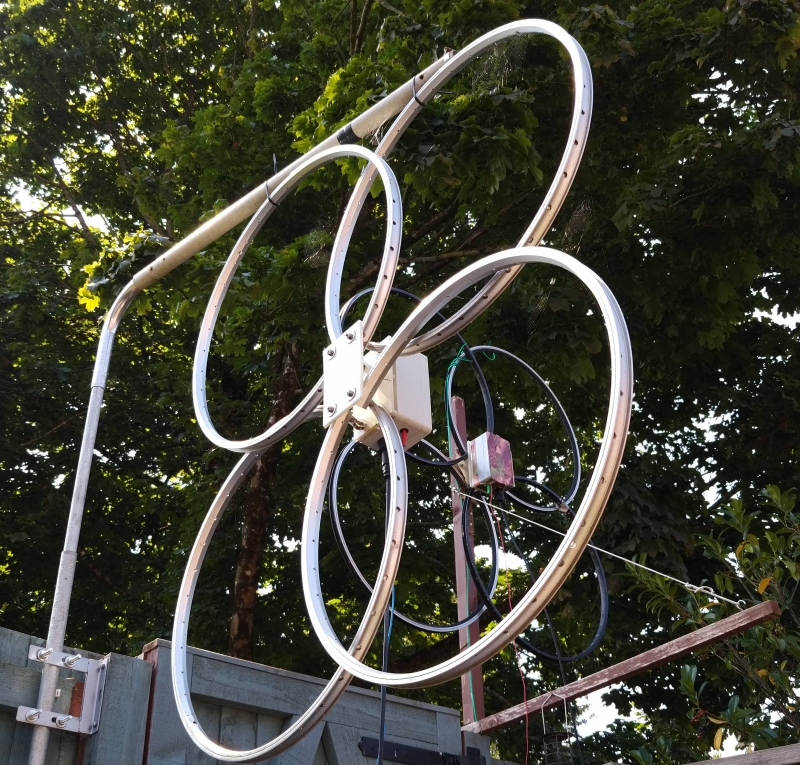Powernumpty
About
- Username
- Powernumpty
- Joined
- Visits
- 5,458
- Last Active
- Roles
- Member
- Points
- 29
-
F****r! QRM (not rude btw)
-
F****r! QRM (not rude btw)
Thursday I noticed my WPSR results and spot ranking had tanked, I check a receiver and there was an almighty level of QRM, checked the noise charts and spotted that it started at around 8:15 the previous evening (Wednesday).
I rotated the Wellbrook loop but it was already nulling in roughly the right direction so the signal was large. Here is a screen dump from a CB vertical.
As I have been through this many times here I often feel like just giving up and finding another hobby but after a few misserable hours I figured use the S Meter extension and gather evidence.
All through Thursday, Friday and today really bad though different patern to the first day or so.
Checked after running for nearly eight hours today and it had gone off!
By now I had taken the Wellbrook on an extension coax to a number of points so that I could identify it was coming from one particular house (who I have only spoken to once when they moved in).
Despite previous wasted time approaching neighbours about this sort of problem I knocked on the door, they were great.
Turns out it is a cheap battery charger (£18) in a shed being used to charge, and desulphate by pulse, a lead acid vehicle battery.
Don't buy this charger type please, if you see them kill them with fire and bury them at least ten feet deep.
Foxsur!
I said I'd try to sort him some filters for tests and lend him another charger but I might just give him my half decent branded one made back when compliance was a thing, can't face this level of junk again. -
Problem with massive RFI after changing router
As far as I can tell from a web search that might be a SR400AC (giving us the FCC ID: might help to check that).
If it is that model, it's input is marked as 12V 3A which should give decent range of PSU's to test.
If a clip on or two didn't do anything then larger FT-240 with multiple turns should show if it is coming from the leads.
Personally I like a low power main router, something decent that sips electricity as it is harder to spray energy around if it is hardly using any, then get a separate WAP (or mesh?) and move those around as best suits your location and wireless coverage. One other option is to move that router away from the incoming data and bridge that gap with fibre to ethernet adapters. In the UK VDSL is ubiquitous and noisy, I have the VDSL-Ethernet modem then Eth-fibre-fibre from there, means the VDSL lead is kept short (with ferrite) and the rest of the stuff has no "long-copper" links to risk radiating (or injecting noise).
(I'm going to have to put a personal web page up somewhere to avoid posting the same "fibre, ferrite.." comments on all threads, at least I didn't mention a brand of routers this time.) -
wsprdaemon - A Raspberry Pi WSPR decoding service
One for Rob (no follow up needed),
Checking my Grafana plots, 40m together with 60m were virtually a straight line, all the others looked normal.
Long story short I had a -1000dBm/1Hz recorded at the same time on those two bands so the "Auto" scale was doing it's best to keep everything in view.
1:36AM was the exact moment we had a fairly local, singular, lightning discharge.
I am somewhat impressed that it caught it, equally disturbed that all my Kit was connected to the antennas at the time.
Stu
-
Listen together with another user




